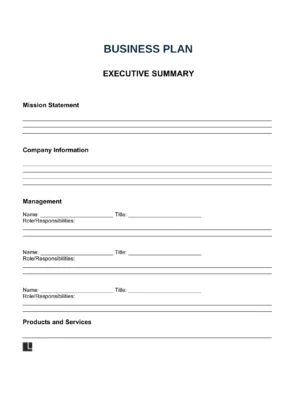
Use our template to make an investment-worthy business plan.

Updated December 8, 2023
Written by Sara Hostelley | Reviewed by Brooke Davis
A business plan is a document outlining a company’s operations, strategies, goals, and objectives. It’s crucial to guide you through each stage of starting and growing your business.
Below, you can find free business plan templates for specific business types. You can also find more in-depth information on writing a plan for your business, whether it’s a food truck, restaurant, real estate business, or another entity:
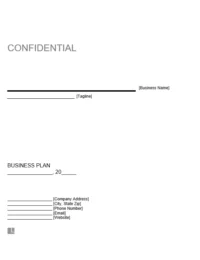
Create a detailed plan that lays out the details of how your business will achieve it's objectives.
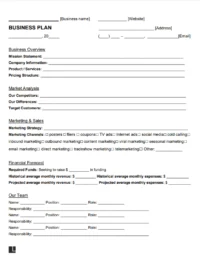
Create a simplified version of a traditional business plan.
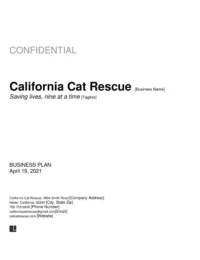
Create a Non-Profit Business Plan and learn how to write one.
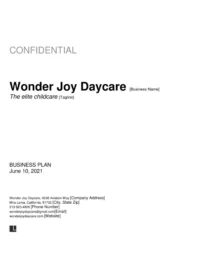
Create a Daycare Business Plan and learn how to write one.

Create a Restaurant Business Plan and learn how to write one.

Create a Real Estate Business Plan and learn how to write one.
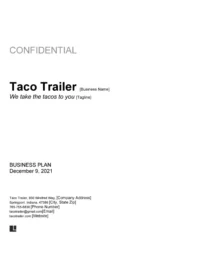
Create a Food Truck Business Plan and learn how to write one.
A business plan is a document detailing how a business, whether it’s a new or existing company, will achieve its goals and objectives. It guides you through every step of starting and running a company.
A business plan can be the foundation of your business, serving as a written roadmap that covers all aspects of how to structure, run, and grow your business. You can also refer back to it as your business progresses to track its growth and success.
In addition to being a helpful document internally, a business plan is also vital for a company to communicate its success to external parties that may influence its future success.
Consider some of the main reasons why large and small business owners alike use business plans:
A business plan sets specific, measurable, and time-bound goals. Having these goals helps you track progress, evaluate performance, and adjust as necessary.
By laying out goals, you have a clear and attainable plan of action with the ability to see and monitor your progress.
A business plan can help you think objectively about your business’s key elements and inform your decision-making as you move forward.
A detailed plan can provide a semblance of control over a potentially cumbersome process. Formulating a plan can improve your ability to make choices and decisions for yourself and the business. This approach is much better than suddenly making a critical decision without time to evaluate or haphazardly letting others decide for you.
An accurate business plan is essential whether or not you need to secure a business loan. Investors and lenders often require a business plan before they commit capital. A solid plan demonstrates your commitment, viability, and potential return on investment.
Create a business plan that grabs the attention of potential investors and provides them with enough structure and confidence that they will move forward and grant funding and support to your business.
You can use your business plan to highlight how the proposed business will be successful and profitable.
A business plan includes a strengths, weaknesses, opportunities, and threats (SWOT) analysis that helps identify potential risks and challenges. It is essential to allocate resources and demonstrate monthly profit or loss. By recognizing these elements early, you can develop strategies to mitigate or address them.
Market research within the plan helps you better understand your target audience, competition, and industry trends. This knowledge is crucial for making informed business decisions.
By learning about your competition, you can help make your goods or services stand out and help validate your business idea.
You should update a business plan as you go, altering your goals as necessary and being mindful of any changes of direction in your business.
A typical business plan includes the following sections:
Our business plan template includes all of the above, so you won’t have to worry about missing out on essential sections.
An executive summary is the first section of a traditional business plan, serving as the first impression of your business. Please give a brief overview of your company, including its mission, key goals, and a snapshot of your financial projections.
You can skip this step if you’re writing a lean business plan for a startup. Instead, replace it with a few sentences outlining the problem your startup aims to solve and the solution you will provide.
Market research indicates there are a growing number of dog owners in Tallahassee who want to train their animals. Consumer surveys indicate that most consumers don’t have the time or resources to train their animals themselves.
Consumers have also expressed a desire for combined dog walking and training services to help discipline their animals.
Pawsitive Strides Canine Coaching & Walks provides a convenient service for customers with furry friends and disposable incomes.
A professional business plan will include a statement about your company’s team and management.
Describe your startup’s legal structure. After that, you can insert a chart to show the hierarchical structure of your company. Show and name your C-suite executives, management team, and key employees. Include short biographies and links to their resumes and LinkedIn profiles to give the reader a complete picture of your staff’s qualifications.
If you have a smaller staff, you can highlight the founder and CEO and your staff members who perform the services or create your business’s products.
Jamie Clayton, Founder and CEO
Pawsitive Strides Canine Coaching & Walks’s dog walkers and trainers
Your business plan must also thoroughly analyze your target market and customer base. The goal here is to show that you understand your market and target audience and that there is a viable market for your business.
Pawsitive Strides Canine Coaching & Walks’s ideal customer is a dog owner between the ages of 25 and 65 with a high disposable income. They’re ideally a working professional or have recently retired from the workplace. They love their dog (or dogs) and want them to be well-behaved and have an outlet for all their energy.
Market research shows that Pawsitive Strides Canine Coaching & Walks has ample opportunities in the Tallahassee area:
Describe the products and services you offer. Pinpoint the value they provide to current and future customers and share your plans for research and development.
The main goal of this section is to convince the reader and yourself that your business is viable and that you have enough resources, time, and energy to achieve your goals.
Pawsitive Strides Canine Coaching & Walks isn’t an ordinary dog walking service. When a customer signs up for our monthly subscription plan, we have one of our certified dog walkers go to their house 12 times a month on a schedule that works for them.
Our dog walker takes their dog on a 30-minute walk and corrects their behavior. Their dog learns how to walk on a leash calmly and be around cars and people. Not only does the dog get some exercise and fresh air, but they also learn discipline, meaning the customer doesn’t have to worry about training their dog in this sense.
Discuss the brand vision you want to cultivate, the metrics you’ll track, and the channels you’ll use to reach your target audience. Outlining how you plan to collect and retain customers will help you experience growth in the long term.
Pawsitive Strides Canine Coaching & Walks will focus on social media and direct mail marketing as its two main forms of advertising. We’ll track customer referrals to determine how many current customers are satisfied with our services.
On our social media platforms, including Instagram and Facebook, we’ll track our audience growth rate, bounce rate, and click-through rate.
Organizations use SWOT analyses to determine how closely a business will adhere to its growth trajectories. This analysis involves looking at a company’s SWOTs, which are:
Your business plan needs to include a thorough operations plan. This section reveals your manufacturing, fulfillment, managing, staffing, hiring strategies, and all the other processes you go through when running your business daily.
Jamie Clayton will oversee the hiring of all employees, and the team lead will train all employees for at least one month to ensure they have the knowledge necessary to deal with animals of all temperaments.
The team lead will also organize the dog walking schedule to ensure all team members have enough time to arrive at customers’ houses and complete the dog walking/training sessions thoroughly.
Create financial projections, including income statements, balance sheets, and cash flow statements for the first few years of operation. If you need funding, specify the amount and how you plan to use it.
Income Statement for the Year Ended December 31, 2023
If you’re seeking funding or investment for your business, explain the amount you need and how you intend to use it. Be transparent about the terms you’re offering to investors or lenders.
Pawsitive Strides Canine Coaching & Walks has already hired a team to serve our existing customers. Once we scale to $500,000 in annual revenue over the next two years and at a 10% profit margin, our primary ongoing annual expenses (not including taxes) will total $350,000.
While already profitable, we are requesting $200,000 in the form of a business loan to buy two additional company vehicles. These vehicles will improve our employees’ ability to get to customers’ homes, and the remaining money will go toward maintaining current company vehicles.
Include relevant documents, such as resumes of key team members, legal agreements, market research data, product design mock-ups, and your business’s legal structure documents.
Remember that each business plan is unique, so tailor your content to your venture and audience. Your business plan should effectively communicate your vision, strategy, and financial viability to potential investors, partners, and stakeholders.
Combine the appendix with a table of contents and footnotes section so you can reference it throughout your document.
You can download a free business plan template below in PDF or Word format: